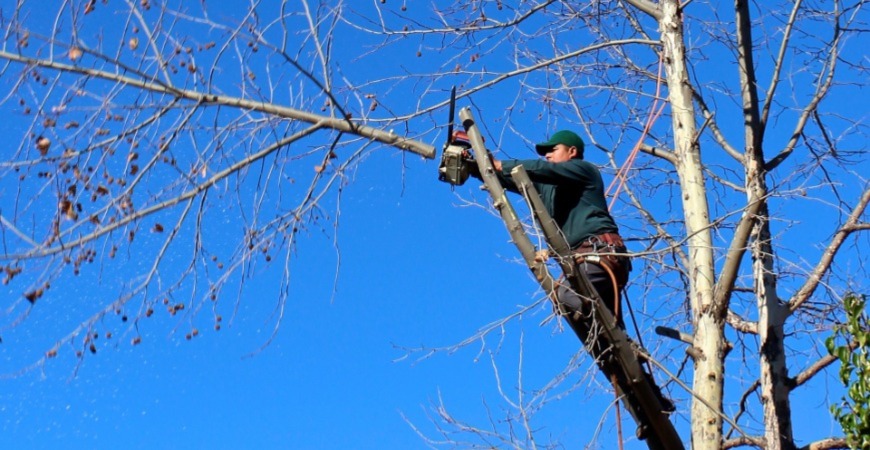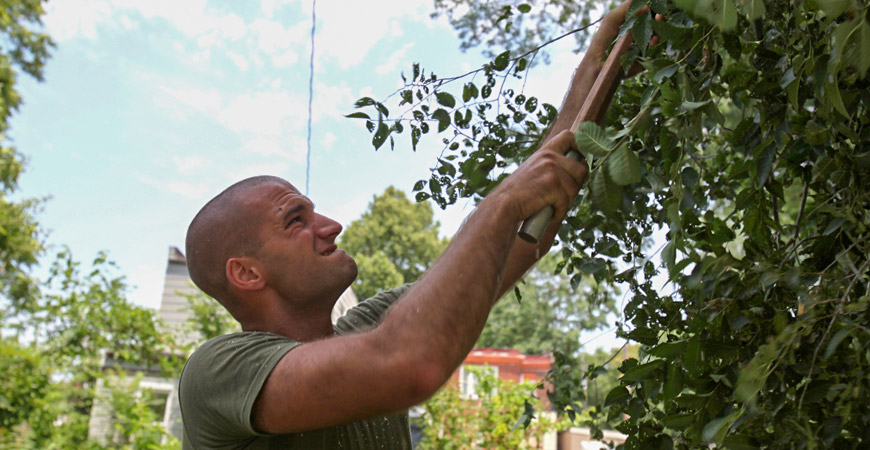
Tree Pruning 101: Keeping Your Trees Safe, Healthy, and Beautiful
If you treat a tree right, it can be your best friend. And perhaps the best way to show you care is through tree pruning.
With spring quickly approaching, now’s the time to get your pruning planning done. For everything you need to know about pruning trees this spring, check out our guide below.
Why Do Your Trees Need Pruning?
Generally, pruning helps improve three things for a tree:
- Safety
- Health
- Looks
From a health standpoint, pruning trees can remove diseased limbs, promote airflow, and help wounds to heal. Each of these things encourages stable growth and prevents potential health issues like infestations.
From a safety standpoint, tree pruning can reduce the risk of a fallen branch causing property damage or personal injury. It can also prevent trees from damaging powerlines or blocking sightlines when driving near your home or driveway.
Finally, pruning helps keep your tree looking aesthetically pleasing. You can make a tree’s crown look less like a mess while also enabling flower growth.
So, unless you want a potentially unhealthy tree that looks bad and opens you up to damage, injury, or a lawsuit, pruning is a necessary responsibility for any homeowner.
When Should You Prune Your Trees?
While there are variations depending on species, most people agree that around March is the ideal time for pruning.
Prune earlier than March, and your tree may end up with new shoots that will end up as dead weight when the tree arouses from its slumber later.
Prune any later than March and burgeoning leaves and flowers will make it harder to identify which trees need to be pruned. And you may end up dealing with newly active pests taking advantage of wounded limbs.
Of course, depending on the tree and your climate, you may need to adjust your pruning date a few weeks in either direction.
For instance, if your trees are spring flowering, it’s best to wait until after they bloom before pruning. This best ensures you aren’t accidentally taking down developing buds.
Even if you don’t end up pruning, assessing your trees for issues during fall can also protect them from damaging winters.
With all this said, if you notice dead branches at any time of the year, feel free to take them down. Dead branches make it difficult for the tree to heal and serve as a suitable hiding spot for pests.
What Tree Pruning Tools Do You Need?
The size of the limbs and branches needing removal will determine the tree pruning tools you’ll need.
For small branches up to an inch in diameter, you can use hand pruners. By-pass pruners, which use a curved cutting blade, are ideal to avoid unneeded crushing or tearing as you prune.
Once branches hit an inch in diameter, you will likely need a pruning saw of some sort. Most pruning saws are operated like any other and should help with branches with diameters between one and four inches.
Anything larger than four inches in diameter will require a chainsaw.
While all pruning devices are sharp and deserve a high level of care when in use, chainsaws take things to a whole new level. Only use it to prune limbs you can reach while standing firmly on the ground.
Pole pruners are an effective tool when branches are out of reach. These tools can come either as sheers or saws, and the size of the branch will again decide which variety you need.
All of these tree pruning tools require care and maintenance. For instance, you should regularly check pruning blades to see if they need sharpening or replacement.
And while it may seem counterintuitive, a sharp blade is a safer one. Dull blades require extra force to use, creating more opportunities for them to slip from your grasp or cause you to lose your balance.
To prevent the spread of bacteria, fungi, or viruses, sanitize blades before and between use. A mixture of one part bleach and nine parts water will kill any lingering microorganisms.
Finally, safety equipment is a must. Gloves, goggles, and even a hard hat will help reduce the risk and severity of any potential personal injury.
How Do You Prune A Tree?
Pruning a tree requires progressing through three steps:
- Pruning for safety
- Pruning for health
- Pruning for aesthetics
That is, remove the branches that pose potential safety issues first. Then move on to removing branches that affect the health of the tree before lastly taking care of branches that affect the tree’s looks.
Additionally, wait for a suitable day to prune your trees. Avoid days that are overly windy or with rain in the forecast.
With your tools ready and the day looking pleasant, work your way through these steps for an effective pruning session.
First, identify branches that need pruning.
This includes dead, dying, and diseased branches, older branches, and lower branches pointing downward to the ground. Additionally, branches that are rubbing against each other or those with a weak, v-shaped connection. (U-shaped branch unions are stronger and healthier.)
Once you’ve identified branches for removal, start with higher, older branches before working down the tree and removing younger branches.
When pruning a tree’s diseased or dying branches, make your cuts between the diseased portion and the healthier trunk of the tree.
Otherwise, make your cuts as close to the source of the branch or branch collar as possible. Branch stubs promote unhealthy growth and invite unwelcome pests.
Always try to make your cuts at the same angle at which the branch meets the trunk or limb. This helps the tree heal quickly.
When Should You Hire Professionals Tree Pruners?
In many cases, tree pruning can be easily handled by anyone comfortable using pruning sheers. However, there will be times when a professional is more well-suited to the task.
For instance, if there’s ever a concern about safety, such as if a tree or specific branch is too large or if it’s situated near power lines, hire a professional. They’ll have the requisite tools, knowledge, and experience to do the job safely.
If you’ve noticed that your pruning isn’t resulting in healthy, stable growth, a professional tree pruner should be able to identify the issue and rectify it. Should you have specific requests when it comes to the tree’s aesthetics, a professional can help.
Tree Pruning Keeps Your Trees Safe, Healthy, and Looking Good
Pruning the trees in your yard is one of the best ways to keep them well-maintained. And with a mixture of the right tools, safety knowledge, and professional help, you can ensure your trees stay healthy and beautiful.
For more gardening and landscape tips, check out the rest of our AskWetAndForget.com blog!











